SAMENESS is no UNITY
One of our topics in the FAIRcity debate is public space. How does it relate to its users. What is it communicating? Is it a peoples space. Or more the State's Lounge.
Who makes the public space? Why does it look the way it does?
Here in Amsterdam we have the Puccini method. Guidelines on how to decorate and organize public space. It started out as a strategy to be able to shop for stones more cheaply: when we by in bulk, price goes down. Amsterdam used to be divided into small independent
Stadsdelen, boroughs, who all did their own designing and shopping. This resulted in a manifold of curbstone, pavement, light posts and garbage bins. All procured in different times following different trends and esthetics of that period. When crossing
the city you could feel history of different neighborhoods. See where streets were patched up or re-designed. The organization and materiality of public space told a story.
But then came Puccini. What was about the budget became a religion. Everything,
waste bin, lights, curbs, seats is part of the method. It developed in an esthetic conviction: more of the same makes Amsterdam a better city. A stronger brand. A more coherent place. Where ever you are in Amsterdam there is the hand of Puccini. Operated by
the potent teams of cityplanners and designers. Away with the specific, in with generic. Only when it is the same the diversity of Amsterdam will come to the fore....
Or will it? Puccini is a kind of annoying esthetic New Speak. The individual choices
and mistakes, sometimes the failure of bureaucracy that materialized in public space of Amsterdam are now 'corrected'. The streets now send a different message: all is good, everything is under our control. We are one.
Does it matter? It does. Diversity
is now limited to the people that use the space.The esthetic suggestion of unity is confusing when at the same time the rift between rich and poor is getting bigger, being gay is not as gay anymore and participation is the new social security. Imperfection
is important in that it makes diversity a reality.
Diversity is about allowing and enabling the clash of differences. It is not a nice bouquet in a pleasing vase.
THE PEOPLES SPACE AND THE PUBLIC SPACE
Who creates public space for whom? When we in our practice are asked to design something the first thing we do is imagine the demands of the end user. If it doesn't meet their demands, what's the point of designing it at all. They are the client. Although
from a business point of view the one that pays the bill is the client. Sometimes that is a dilemma. The one that gives you the job might have a very specific taste and has already a clear idea of what it the result should be.
What if the client
has not only a specific taste but also a specific agenda. She maybe want encourage a certain use and discourage the other. A perfect example are the benches in the train station. They are comfortable for sitting, but, the divider between the seats makes it
impossible to lie down on them.The design actively helps to solve the problem of the railway company of bums or drunks spending the night. Sleeping is out of the question. By designing the bench unfit for a specific use this behavior simply won't occur anymore.
So far so good. A train station is not a hotel.
When you design public space things become even more complicated. Who is the client? Who is the principal? In a democracy it is sounds simple: we the people are both. Makes a strong case for taking
our demands seriously. In reality things are different. We live in a representative democracy. So theoretically our politicians would be the ones to represent our wishes. But they have signed away the governing of most daily practical matters to a large body
of civil servants. They make the plans and the council will say yes or no. So who designs public space? A specialized group of civil servants. Who is the patron? In theory the council. In practice their chief. Who is the client? In theory we the people. In
practice the council. Well, makes sense. In a way. You can not have random citizens ruling the streets. Can you?
The consequential gap between the end user and the designer is felt by politicians too. So that's why in the Netherlands we have procedures
for giving a voice to the people. Designs are presented to the directly involved to give them the opportunity to evaluate them. The criticisms will then be 'taken on board' in the final design. Sometimes there is even the possibility to actively choose
between options. So that the esthetics and practicality of a space are in line with the preferences of the ones it concerns.
Of course the Puccini method seriously limits the choices that can be made.The civil servant designer will focus on using
the method correctly. If she is ambitious even be inventive. But it will all be Puccini- ism. A critical discourse on what is needed where is less likely to happen in a format. Lego cars are cars made with Lego. Which Lego car suits Barbie best is a different
assignment than 'lets make something the doll grandma knitted can travel in.' The point could be very well made that in a urban situation the latter question is a more accurate assessment then the first. The underlying assumption in the Puccini method
is that a city needs Lego. Either to cement it to a unity, or, to enhance its underlying coherence. Both essentially political statements. The Puccini method doesn't take the point of view of the people. But that of the governor or the planner.
If
Puccini is politics, not practicality it leaves us with an important question. What is considered the correct use of public space?
public space etiquette
When budding artist Amber came to visit our studio on the NDSM she told an interesting anecdote. In 2013 there was a big art project 'Call of the Mall' in the Utrecht Central Station and adjoining shopping area Hoog Catherijne. One of the artists partaking in the show, Pilvi Takala, had declared some spaces in the station hall 'free zones'. These were areas where all the rules that came into place since the 1960s were revoked. You could smoke, form groups, play music, loiter, many things that we now consider unfit for public space. Sounds exciting. So what happened in these free zones? Nothing. Nobody used them. To present the public with the right to be free doesn't incite different behavior.
Why do people do not do everything they want to do when in the company of other people? Stupid question. Why would they? Belonging is the strongest impulse in the human species. In fact it is so strong that a simple look from a fellow human being is often enough to make us lower our voice, finish the cigarette or step aside. Isolation is the worst punishment we can think off. It is considered so cruel that it is only allowed in very specific situations and not for long. We are a 'we' species and kept in line much more by each other than by rules. More importantly, what not to do is something situation specific and not a fixed thing.
A beautiful example of spatial social behavior is the new shared space that is created at the pont landing next to the central station. Formerly a Notoriously unpleasant and by many perceived
as dangerous place. Bikes, scooters and pedestrians would all have their own ordained space. Everybody had their own 'right of way', defined by lines and roads. Now nobody
has any rights any more. You just have to get across safely. And it works. What was impossible when there were official rules works when there is only one: cross safely, you decide how.
Shared Space means that you have to look at eachother.
Figure out what the other person is going to do. Speed up or slow down accordingly. Something we are very good at. We do it all our lives permanently.The reason also why the proposed "free zones' in Utrecht Central Station didn't work: when acting 'free' is
considered annoying by others most people just stop acting free. Being the odd one out means isolation, equaling punishment.
So why have rules at all? Good question. Rules work where 'the look' isn't enough or not doesn't apply. But there's a tipping
point when the rule itself becomes 'the look'. A preventive measure rather than a regulation. This is when freedom becomes an issue.
http://www.kunstbeeld.nl/nl/nieuws/20826/call-of-the-mall-hoog-catharijne-en-utrecht-centraal.html
http://www.callofthemall.nl/nl/wat-is-er-te-zien/kunstenaars/
Yes we can
In the new lobby of the Amsterdam central station there are a few large concrete sit objects. Same color as the floor they are a bit like ripples of concrete. No divider, plenty of space to lie down, you could even a bed group of people.They suggest you could even crash here after a party. It fits the whole laid back leisure environment.
What kind of bold move is this form the NS, the railway company. Has now the station indeed become a hotel? Well, no. It is OK to feel that it is possible to have a good time here but of course everything is monitored. Camera surveillance coupled with security personnel is the contemporary way of nipping unwanted behaviour in the bud. No obvious signs saying 'thou shalt not!'" No divider preventing you from doing something. No, it feels like home. Slightly larger scale and youhave to pay for what you get from the fridge, but it is soft, inviting.
How does surveillance change peoples behaviour? Knowing that you are watched, or suspecting it, makes us very obedient. The suggestion of monitoring is as good as actually doing it. We are not hooligans. We are more like sheep. There have to be strong other things into play to make us ignore surveillance. Drugs, alcohol or being part of a group hey make you care less. The first to make you over confident or indifferent to possible punishment. When you are part of a group you become the bigger force: they just can't punish you because you are stronger.
There is a another power that makes you ignore or defy the rules: convictions. You know your behaviour might be punished or condemned but you do it anyway. Your reason to do so is more important than consensus. You feel you are bound to something else than the status quo. Your convictions give you the courage to act differently, be the odd one out. This behaviour is rare. Not normal. It sends the message to others that you might be crazy or dangerous. All positions you stay away from as much as you can. You could be reprimanded, punished even.
Our love for normal is the reason why camera surveillance works. To be recognized as officiallly no longer part of the group is the worst thing that could happen. It is one of our deepest fears. So the next time you see a person being different by choice salute her. At least for bravery. And for conviction letting win over fear.
happy city
Can the build environment make us happy or sad? Intuitively you say yes. Of course. If you live in old dilapitaded unsafe areas you would be less happy than if you live in a new freshly build suburb. Or not? Not! Research shows that the key factor in feeling happy in a place, is trust. The more you trust your neighbour, the more happy you are, the more likely you are to make a donation to a good cause. Be a citizen so to say.
What are the key elements that make you trust a place? Well, other people. Signs of people being active, doing their people's thing. An old street with lots of signs, shops, doors, windows is good. A new office building with no doors, slick and clean is not good. The chance of meeting other people going along their daily business is reassuring. Having to walk the sidewalk on your own is slightly upsetting. But there are other factors too. Green is good. Plants, trees, grass, rocks, sand, all of this makes us feel good and giving.
The way a city is planned has significant effect on our experienced well being. The more segregated functions are, the more isolated you feel yourself. Having to travel short distances between your daily activities makes you feel more connected and content with your surroundings. And more willing to take part. It seems that basically we prefer a social and small scale place to a mono cultural and smooth facaded quiet place.
Duh! Nothing new here, you say. But division of functions has been the rule of thumb of urban planning the last 75 years ... Bigger mono functional buildings are what we are building now. So ... Ifpeople are more willing to share in what they perceive to be a friendly environment, and we want a participative society..... Shouldn't we take these things to heart? Shouldn't we build mixed and lively neighbourhood and change the existing ones? Shouldn't we just leave older areas that function well alone. Not renovate?
Shouldn't our priority when we gentrify areas be to keep the lively character?
Yes we should. At least if we want a happier city. The short term most lucrative city and the most controlled city have different blueprints. Look out of the window. Which city are you living in?
irresistable
If we are these docile group oriented meek citizens by nature resistance seems near to impossible. How to say and act NO? One strategy is to get angry. When angry you overcome fears and are able to do things you would consider impossible when relaxed. The only downside to anger is that it is not a pleasant feeling and it is bad for your health in the long run. People that are frustrated or sad are more prone to get infections and colds and they die younger.
The problem is that it is hard to stay angry for longer periods of time. When you are lucky anger changes to indignation. Indignation is where arguments come into play. You know why you are angry, you know why it is not right. Indignation also works as a bridge: you maybe not in synch with the people around you, but you have a valid reason. You are not in, but you are definitely not out.
Sometimes you get lucky. You find fellows. Finding people that are angry with you changes everything. All of a sudden your indignation becomes a motor. You are back where you want to be: in a group. Your ideas are no longer frowned upon. Quite the contrary. They are a reason to love you. Your resistance makes you irresistable.
Then the magic happens: an 'if' becomes a 'when'. Things you only dreamed about you are all off a sudden planning. You become confident and go outside: make yourself known. You protest against the powers that stand between you and the dream. You wait for things to change. You have meetings, plan actions. And nothing happens. You are too small a force in too big a world. But you hang in there. Sure you're not the only ones that want change?
That's what a platform like FAIRcity is about. Finding fellows. Not about changing your ideas. Not about being difficult. It is about that you're not crazy or weird. Problems are real. You are a realist when you want to change things. Not a trouble maker. It is about joining forces. Talking to eachother, getting to know each and maybe helping eachother.
Or is it an illusion that forming an allience is not political?
lobby
What could you use it for? That's a simple but nt innocent question. Say you have a platform for active citizens, couldn't it serve as a political power as well? When you have joined forces and made yourself visible, wouldn't it be silly not to use
your influence?
This is the difficulty with living in a representative democracy. The immediate reflex is to act as representatives as well. Is that wise? What happens when you speak for people. Isn't the political system part of the problem. Isn't
the whole signing away of power to professionals a tradition we need to change?
There is an interesting parallel with Occupy movement. Their attempt to function through direct democracy resulted in decisions made in very lengthy meetings,
where stamina was almost more important than arguments. The use of hand signs was fun first but became annoying when in a hurry to take a practical decision like where to put the bins. How many input do you want in things like that. But there was something
else that needed to change with the practice of decision making changed. Timing. Taking it slow and accepting that the best decision was unanimous. Even though it might have been not the best to your liking.
Direct democracy would slow down things
considerably. Maybe some types of planning wouldn't happen at all. Too complicated. The result would not only be a more just way of ruling, it would change societies dynamics considerably. More than alternative approach to governance it would be a game changer
in politics. We would need to reinvent reasoning. What if your person as a politician wouldn't matter anymore. What if your party had to discuss about every rule with everybody it concerned. Wow. It is hard to imagine you could have such influence and responsibility.
In Peru up till a few decades ago there were indigenous village where decision were made until everybody agreed. They met once a year and talked about what was needed deciding upon. A process that took as long as it took. Sometimes a day. Sometimes
a week. After that it was done. Nobody came back to it again until the next year. If decision making is so lengthy and time costly, you change your mind less often. Size matters though. In these communities everybody knows each other.
The
concept of the polis, the city, was thought up to make living in bigger communities than your family possible. It was an attempt to find out what values we have in common when we are not related. What would be just grounds to rule. Politics were one result
of that experiment. The polis is no longer a concept or an experiment. Its shape and workings is now more or less an effect of politics. What policy would honor the values we share is no longer the main discourse. Instead of our desires being the grounds for
policy making, it is the traditions in governance that dictate what we could desire.
It makes the question what a platform like FAIRcity should and could be all the more pressing. Is it about possible power play or about our power to play.
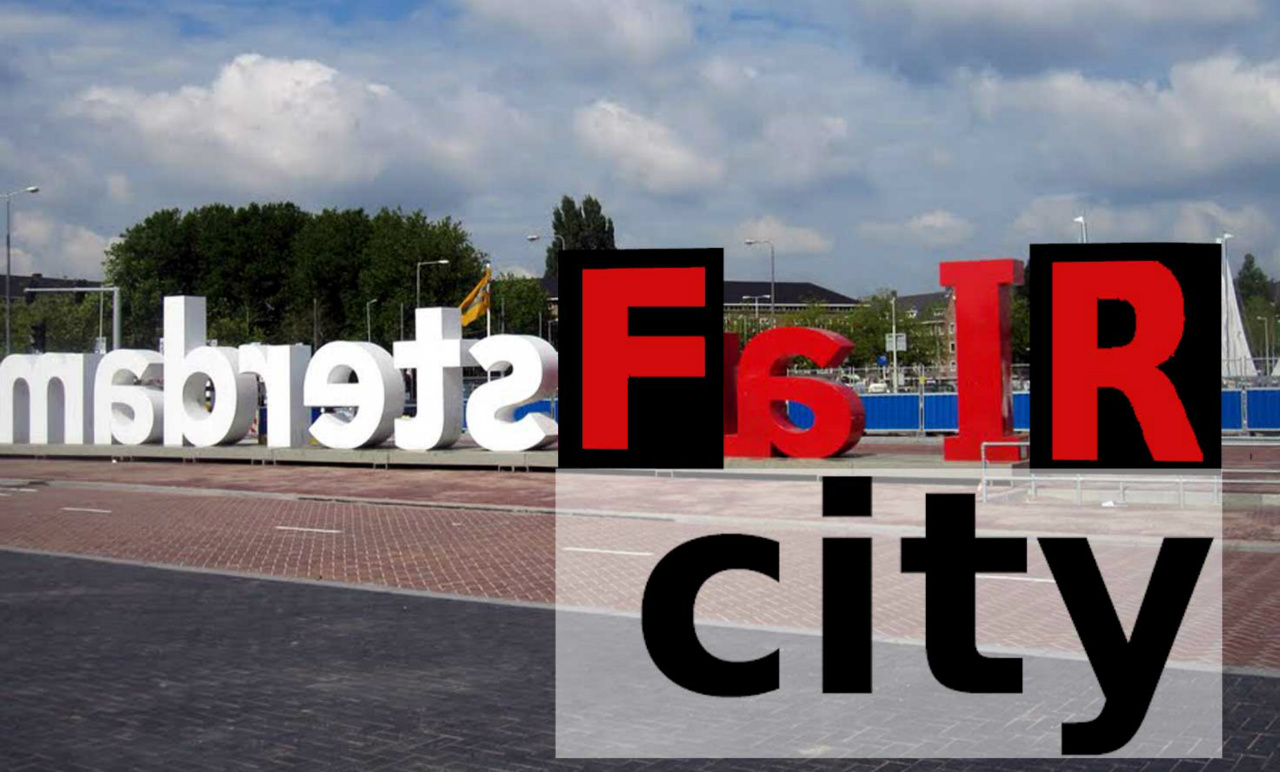
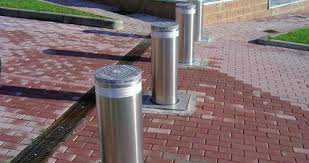
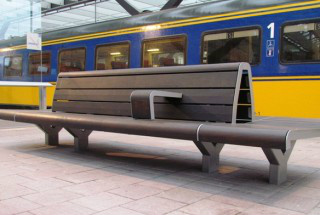
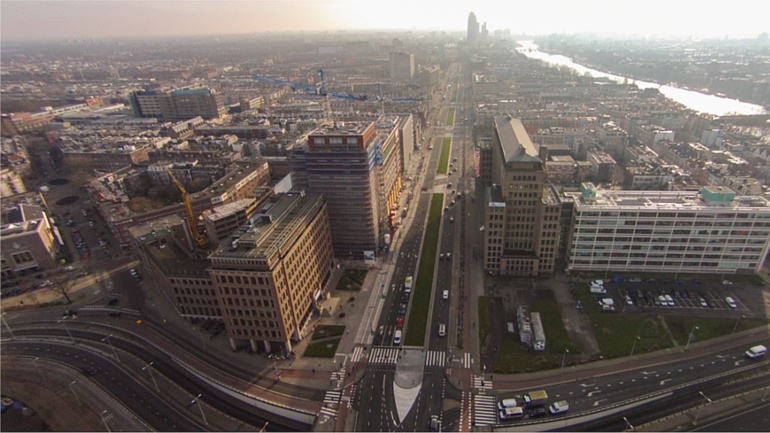
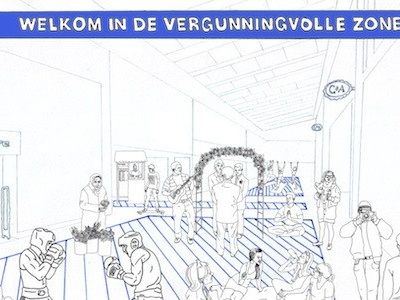
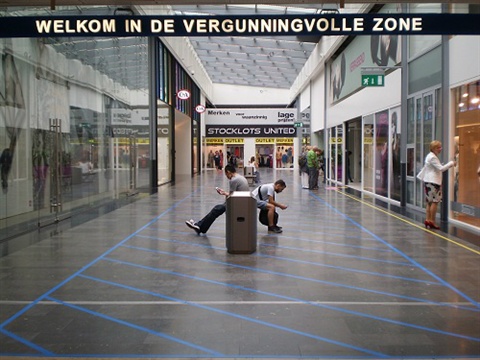
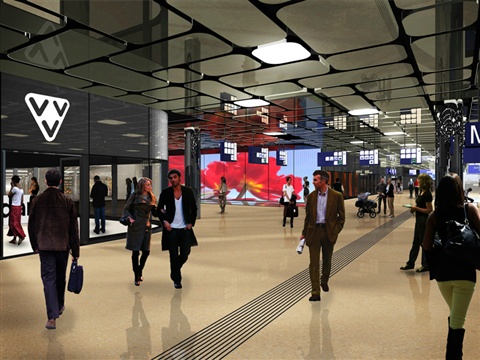
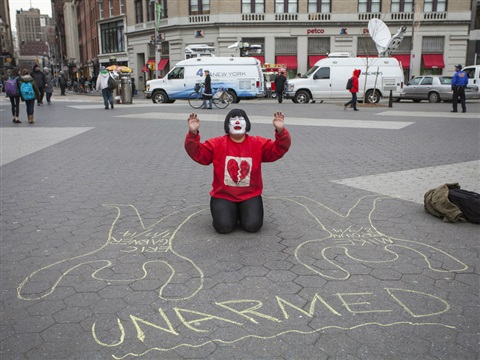
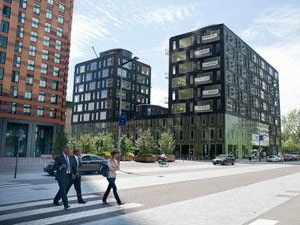
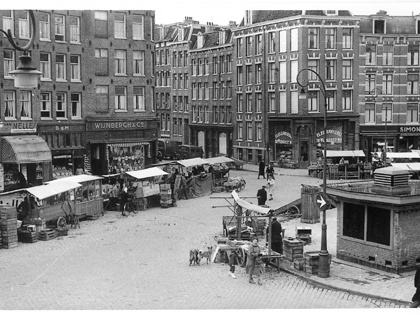
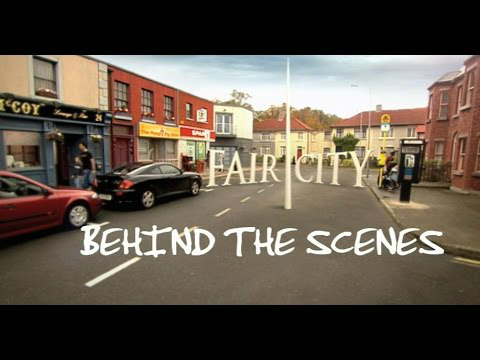
Meest recente reacties
ik zou graag illen weten wie de oudste geborernde in levenzijnde mogonees is
Dag Bart en Klaar!
Wij hebben jullie ontmoet bij de radio uitzending Kunst is Lang.
Ik vroeg me af hoe ik met jullie in contact kan komen in de toekomst! werkt het op deze manier? groet Eva
super trip for you , thank you beri beri much four sharing with us fans.....many greetings and best wishes to you and your loved ones...

Beste Bart en Klaar, Ik verblijf nu op Moengo en ik vroeg me af waar jullie je informatie over stafdorp en happyland etc vandaan hebben gehaald want daar zou ik graag nog meer over lezen! Alvast dank